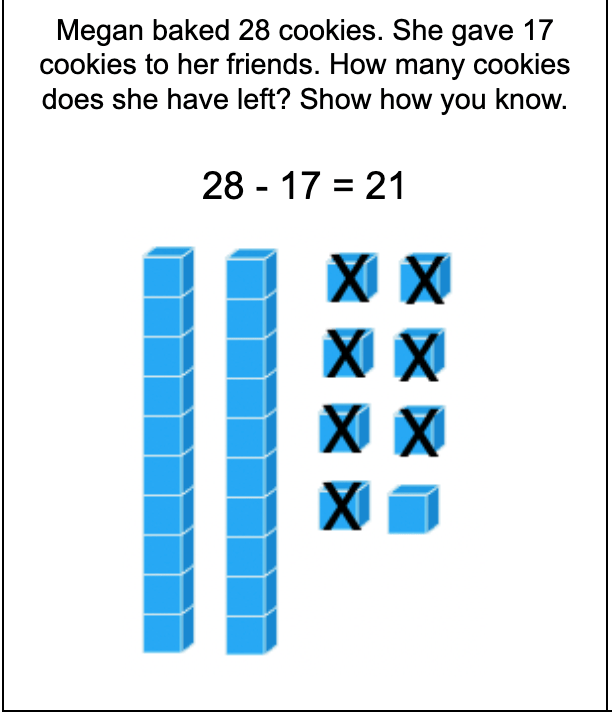Emma has 34 marbles. She wins 25 more in a game. How many marbles does she have now?
59 marbles
Solve using place value: 42 + 30 = ?
72
Is this correct: 10+16=26, and 10+10+6=26? Why?
Yes because if you break up 16 into 1 ten and 6 ones it is the same.
Jake had 76 stickers. He gave some to his friend and now has 42 left. How many stickers did he give away?
34 stickers
Use the base 10 blocks strategy to solve: 58 + 6 = ?
64
llllll oooo
When adding 46 + 38, a student breaks it into 40 + 30 and 6 + 8, then adds the sums together. What place value strategy is this?
This is using place value to decompose tens into 10 ones.
Mia had 28 crayons. She bought some more and now has 50 crayons. How many crayons did she buy?
22 crayons
Solve 91 - 47 = ?
44
Why is this wrong?
Becuase Megan did not decompose her tens into ones.
A farmer has 63 apples. He picks 18 more apples from a tree and then sells 25 apples at the market. How many apples does he have left?
56 apples
A shop has 56 pencils. The owner buys 37 more. Use place value to find how many pencils there are now.
93
In the problem 57 + 26, a student adds 57 + 3 to make 60, then adds the remaining 23. What strategy is this, and why is it helpful?
Making tens is a strategy that makes mental math easier.
Two classes are on a field trip. One class has 48 students, and the other class has 36 students. If 14 students go home early, how many students are still on the trip?
Solve this problem using the relationship between addition and subtraction:
If 26 + ? = 84, what is the missing number?
A student solves 64 - 27 by thinking 27 + ? = 64 and counting up. What strategy is this, and why does it work?
Because addition and subtraction are opposites.